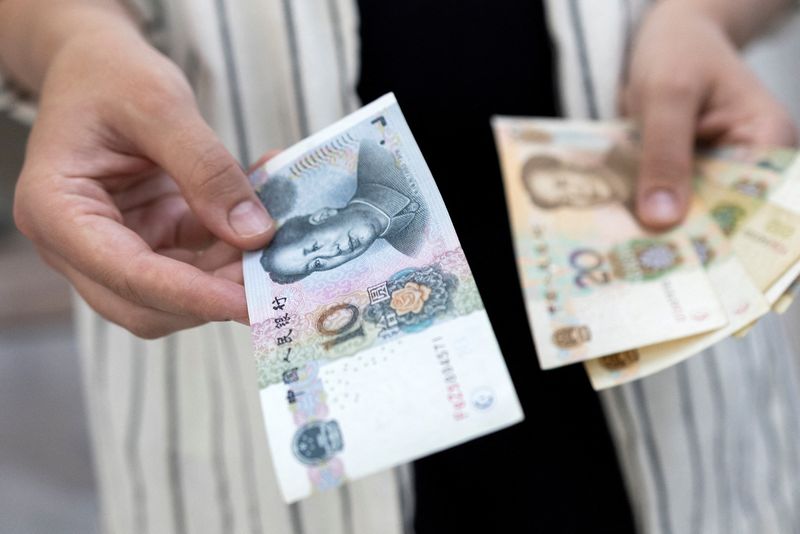SHANGHAI (Reuters) – China kept its benchmark lending rates unchanged for the seventh straight month in March, as expected, with the economy already benefiting from policy actions taken last week as it recovers from the pandemic.
The need for more imminent monetary easing subsided after the People’s Bank of China (PBOC) said on March 17 it would cut the amount of cash banks must set aside as reserves, market watchers said.
On Monday, the one-year loan prime rate (LPR) was kept at 3.65%, while the five-year LPR was unchanged at 4.30%.
“The necessity and urgency of interest rate cuts in the short term are not very high,” said Bruce Pang, chief economist at Jones Lang Lasalle.
Although the recovery was still gathering pace, China was constrained in easing monetary policy by such factors as the yuan exchange rate and global monetary tightening, he said.
Economists say that if China cuts interest rates as other countries raise them, widening yield differentials will put downward pressure on the yuan and risk capital outflows.
A bout of data in the past two weeks has shown that economic activity picked up in the first two months of 2023 as consumption and infrastructure investment drove recovery from pandemic disruption. That has offset weak global demand and a persistent downturn in China’s property sector.
(Graphic: China lending rates unchanged in March https://www.reuters.com/graphics/CHINA-ECONOMY/LPR/zdpxdqrzwpx/chart.png)
In a Reuters poll conducted last week, all 22 participants predicted no change to either loan prime rate. Such unanimity has been rare in previous surveys.
Xing Zhaopeng, senior China strategist at ANZ, distinguished the central bank’s objectives in managing the LPR, its main tool for promoting or restraining demand, and the reserve requirement ratio (RRR) that it imposes on banks. Last week’s RRR cut had been a reaction to the collapse of two regional U.S. banks this month, he said.
“The central bank’s RRR cut was more of an emergency response to prevent overseas banking crisis from spilling over to China,” Xing said.
SPILLOVER EFFECTS
Xuan Changneng, a deputy governor at the PBOC, said on the weekend that the collapse of Silicon Valley Bank (SVB) had showed how rapid shifts in monetary policy abroad were having spillover effects.
An RRR cut nonetheless also promotes economic growth, so economists thought that last week’s made an LPR cut less likely.
In another move last week to lift demand, the PBOC ramped up medium-term liquidity injections when rolling over maturing policy loans, although it kept the interest rate on those loans unchanged. That rate, called the medium-term lending facility rate, serves as a guide to changes in the LPR.
Some economists still see room for the LPR to fall this year to support lending and lift investor confidence.
UBS expects the PBOC to encourage commercial banks to adjust deposit rates downward, cutting the banks’ funding costs and making some room for the central bank to cut the LPR just a little.
“China’s LPR may be lowered slightly by 10 basis points in the rest of 2023, which could help lower the actual funding cost for the real economy and mortgage rates,” said Wang Tao, UBS’s chief China economist.
Most new and outstanding loans in China are based on the one-year LPR, while the five-year rate influences the pricing of mortgage loans. China last cut both LPRs in August to boost the economy.
(Reporting by Winni Zhou and Brenda Goh; Graphics by Kripa Jayaram; Editing by Himani Sarkar and Bradley Perrett)
